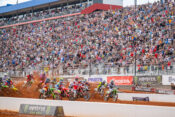If you’re a BMW fan and looking for a middleweight adventure motorcycle to explore back roads and faraway places comfortably and with confidence, BMW has you covered with three new/updated models. For the more experienced riders, there are the new F 900 GS and F 900 GS Adventure models, and for the entry-level ADVer, there is the new F 800 GS. These bikes replace the previous F 750 GS, F 850 GS and F 850 GS Adventure models. Yes, keeping track of all this is a little confusing, but our main focus here is the all-new F 900 GS, the model with the most changes of the three, even more than the F 900 GS Adventure.
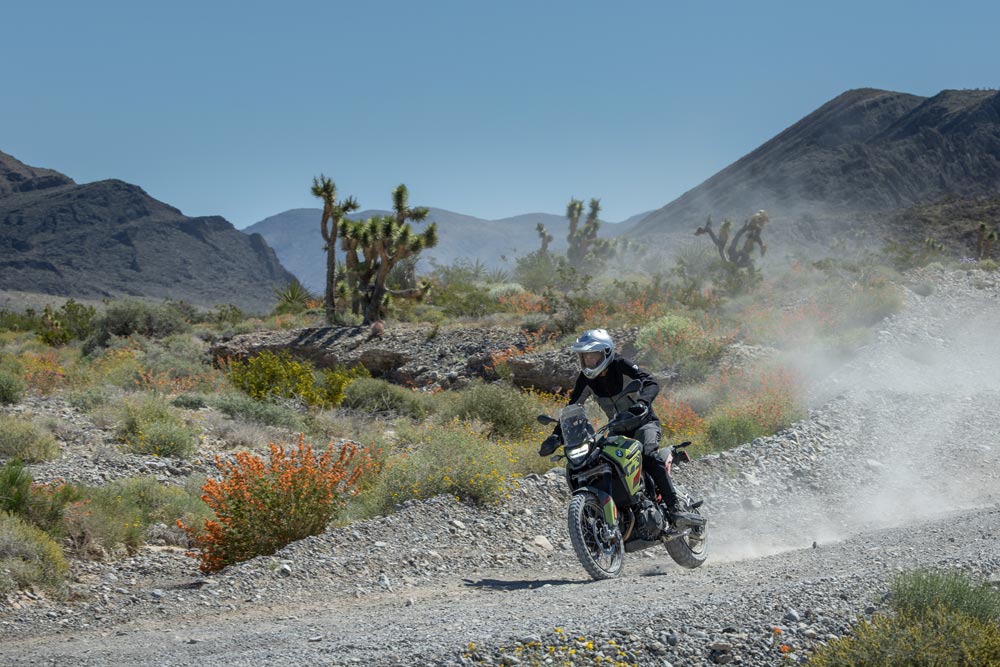
Photography by Kevin Wing
BMW recently launched the new F 900 GS, and I got a chance to spend the day riding it on and off the road in the Nevada desert terrain surrounding Las Vegas. My ride for the day was the Sao Paulo yellow-colored base model.
What’s New | 2024 BMW F 900 GS
The 900’s DOHC, four-valve parallel-twin engine has grown from 853 to 895cc and delivers an impressive 105 horsepower at 8500 rpm, a significant 15-horsepower bump in power over its predecessor. Torque is up 5.6 lb-ft to 68.6 lb-ft, and BMW promised us it would deliver a much broader torque curve than the previous F 850 GS. It features a 90-degree crankshaft offset and 270/450-degree firing interval. It also uses counterbalanced shafts to squelch vibration, and it is fitted with a lighter and good-looking Akrapovic muffler.
BMW went to great lengths to cut weight, shaving off an impressive 22 pounds. According to BMW stats, the F 900 GS weighs 483 pounds with its 3.8-gallon fuel tank topped off.
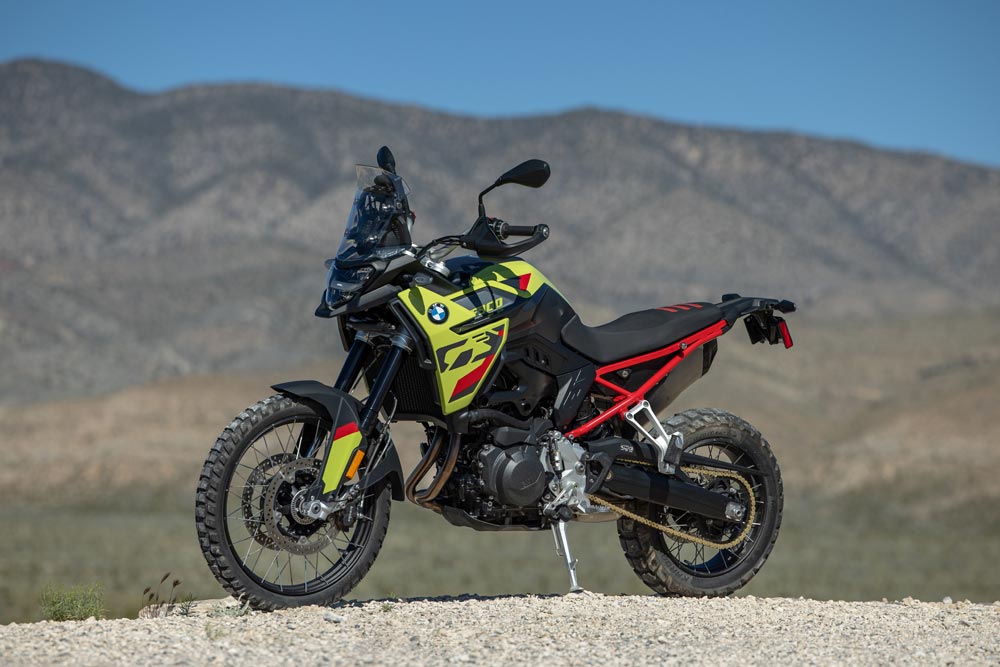
The F 900 GS has been redesigned with new fairing and weight-saving measures, resulting in a slimmer profile than the F 850 GS. The bike looks smaller and has more modern styling, featuring full LED lighting and rear turn signals that also function as brake lights.
The bike’s ergos have been revamped. BMW redesigned the rider triangle. The updates include footpegs that are 0.79 inches lower, a handlebar that is 0.5 inches higher, and a revamped seat that is 34.3 inches high (a lower 32.9-inch seat is also available). Another significant update is the adjustable gear and brake foot levers, which can be customized to suit your boots, which is especially beneficial when wearing bulkier off-road boots.
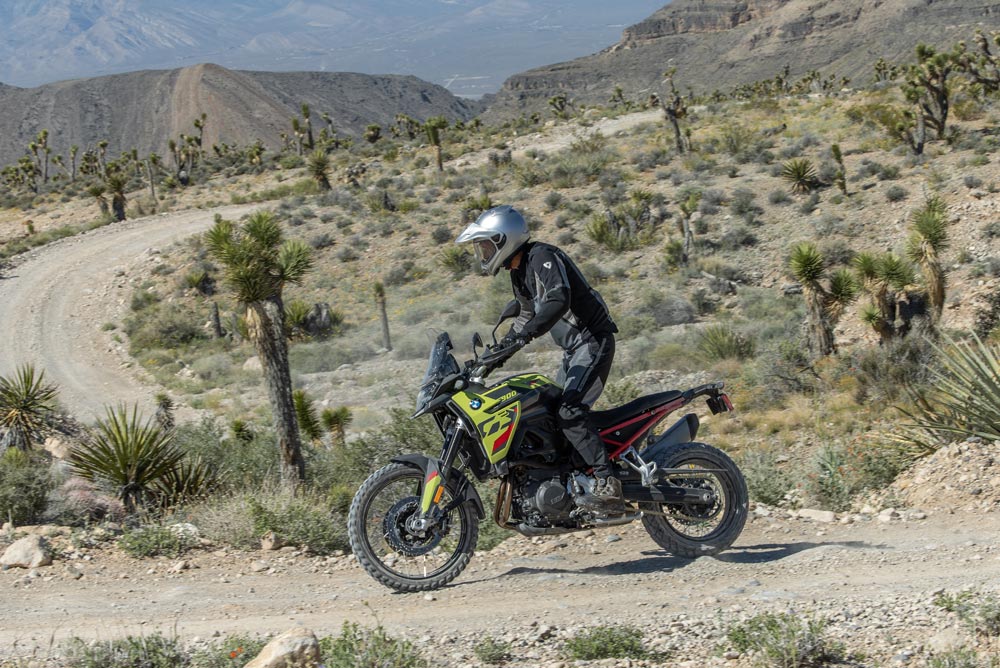
The 900 features upgraded suspension, including a fully adjustable 43mm Showa fork. The rear shock, paired with a lighter aluminum swingarm has adjustable preload and rebound damping, but, unfortunately, no compression damping adjustability. The forks offer a generous 9.1 inches of travel, while the rear shock offers 8.5 inches. The bike has 21-inch and 17-inch spoked tubeless wheels fitted with Metzeler Karoo 4 tires.
The F 900 GS is equipped with two-piston floating Brembo calipers at the front, which squeeze small-ish 305mm discs, and a one-piston floating rear caliper, which squeezes a 265mm disc.
Electronics-wise, the F 900 GS comes well-equipped in its standard form. It includes a six-axis IMU, two riding modes (Rain and Road), ABS Pro, and Dynamic Traction Control. Additionally, it has a 6.5-inch TFT display with smartphone connectivity, a USB socket, handguards, heated grips, and self-canceling turn signals. For more off-road adventures, the Enduro Pro package is available, which adds Riding Modes Pro, which has three additional modes: Dynamic, Enduro, and Enduro Pro.
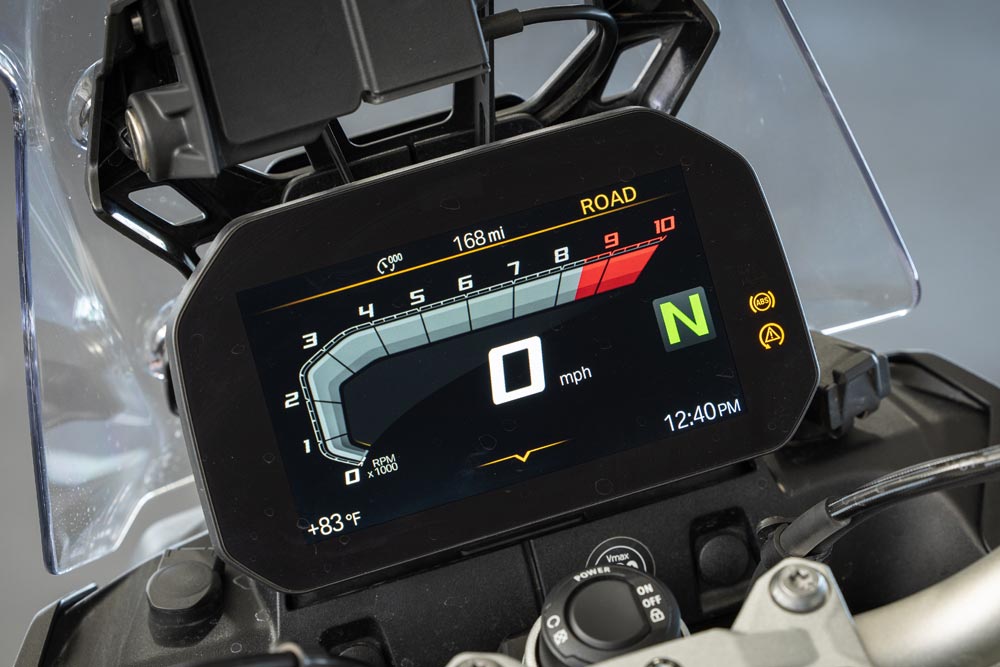
Speaking of packages, beyond Riding Modes Pro, there is also the Premium Package, which costs an additional $1750 and includes Riding Modes Pro, keyless ignition, a quickshifter, tire-pressure monitoring, cruise control, and the durable M Endurance chain. The next step up is the $1495 Enduro Pro package, which includes the additional ride modes, upgraded suspension—including a 45mm Showa fork—M Endurance chain, and one-inch bar risers. The Enduro Pro package can be combined with the Premium package. BMW calls this the Off-Road Package, which adds $2500 to the base MSRP, and the GS Trophy color (red, white and blue) model. Whew! I know, it’s confusing and is a lot to soak in; your BMW dealer can fill you in better than I can, but that’s the gist. The bottom line is that I rode the base model fitted with the Riding Modes Pro and Premium packages.
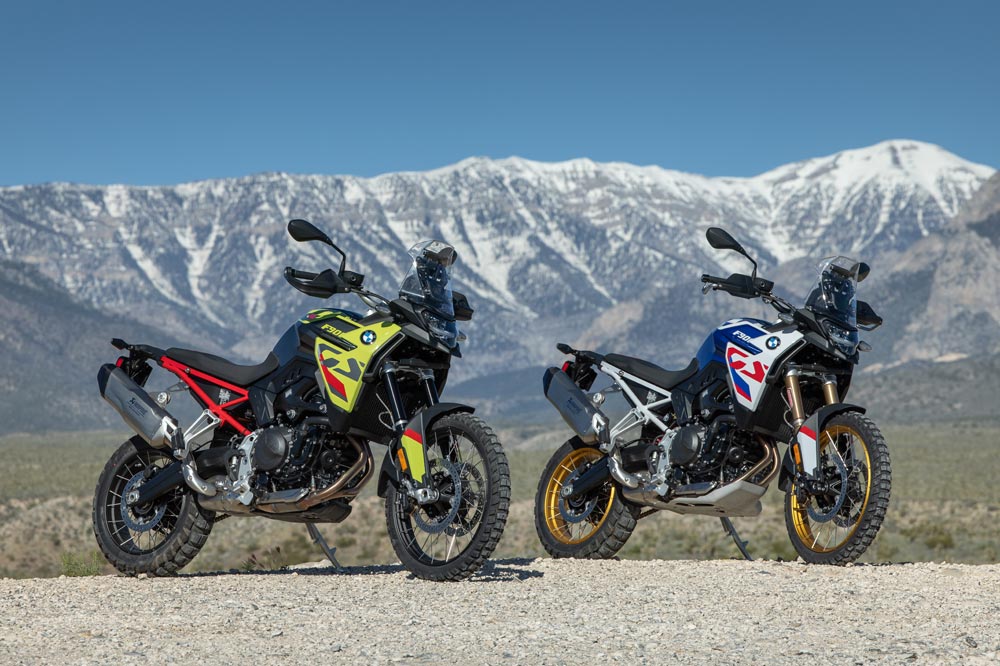
Now, The Fun Part | 2024 BMW F 900 GS Review
Like most adventure rides, ours started out on the pavement, which included a semi-long haul on an open highway, which was no match for the F 900 GS. Although it’s been a while since I last rode the F 850 GS, you can certainly feel the bump in power, and BMW didn’t lie when it said it would deliver a much broader torque curve. At just approximately 1800 rpm, the parallel-twin engine propels you forward with enthusiasm and really comes into its own in the midrange, where it delivers a powerful surge of acceleration. At higher rpm, I wasn’t disappointed, as the F 900 GS keeps delivering. Even if you’ve never ridden the 850, the 900’s power delivery is impressive, and adding to the engine’s overall riding pleasure is its smooth-shifting six-speed transmission and vibration-free environment. Very smooth.
Wind buffeting is noticeable but not intolerable as speeds pick up; unfortunately, the BMW’s windscreen is not adjustable. Luckily, the F 900 GS’s riding position is very relaxed and comfortable, and despite the somewhat tall seat height (34 inches), I could flat-foot the bike at a stop. BMW, however, offers an optional two-inch lower cushion, so seat height shouldn’t be too much of a factor for most riders.
The 900’s 21-inch front wheel might reduce front-end feedback, but it doesn’t prevent confidence when riding hard on the pavement.
The cockpit is well-designed, highlighted by the easy-to-decipher 6.5-inch TFT display showing all necessary information. Smartphone connectivity is available, and navigating the interface with BMW’s traditional multi-controller wheel on the left grip is simple.
On the pavement, the F 900 GS offers a plush ride; I felt no need to make any adjustments right away for my 170 pounds. Brakes are sufficient enough, though the initial bite could be better.
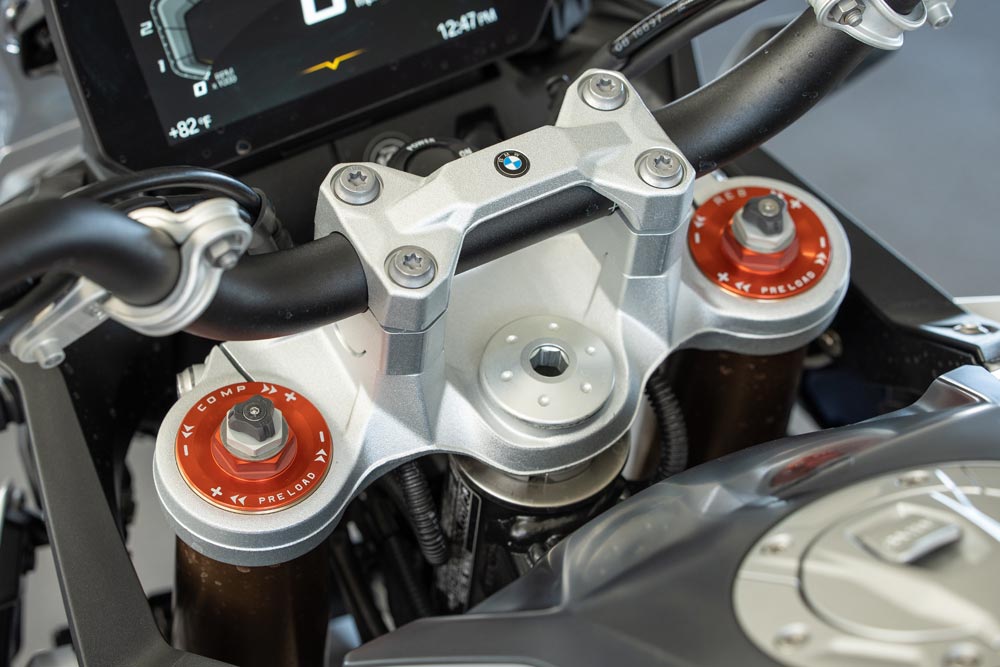
Fuel range could be better, as well. The F 900 GS holds 3.8 gallons, which is 0.2 gallons less than before. I rode the BMW back home to Southern California and had planned an off-the-beaten-path “shortcut” that really isn’t shorter; in fact, it’s longer but way more scenic with no traffic. After topping off with fuel, I got about 10 miles into my shortcut, and after calculating in my head how far I had to go (approximately 135 miles from the beginning) to the next gas station, considering the bike’s fuel quantity and comparing that to what the bike’s range computer was telling me, I suddenly wasn’t confident I was going to make it. The BMW’s fuel calculator initially said I could (but I don’t trust those things anyway). However, 10 miles in, it changed its mind and said I would be cutting it close, so I played it safe and turned around, something I would not have had to do on most other ADV motorcycles that hold more fuel.
The off-road portion of our ride was short and not very challenging. It was a rocky, maintained road that offered little variation—just a lot of rocks—loose rocks and rocks that weren’t going anywhere. The out-and-back, basically hard-packed dirt road was brutal on the F 900 GS’s rims. More than one journalist on the ride taco’d their front rims, some resulting in flat tires. However, I smacked a few of them pretty good at speed, as well, with no damage; other riders did, too. Still, the F 900 GS handled well over the rocks, and my pace increased as I became more and more confident on the bike, knowing it would take a substantial smack to knock me off the bike. But after a couple of good, “oh-crap” front-end deflections, I found my happy spot and finished out the dirt portion of the ride happily and comfortably. I didn’t get the chance to ride the bike on more “normal” not-so-rocky dirt roads, but I’m guessing it will be quite good. Talking to some of the other journalists who did get a chance, they reported that the bike performed very well.
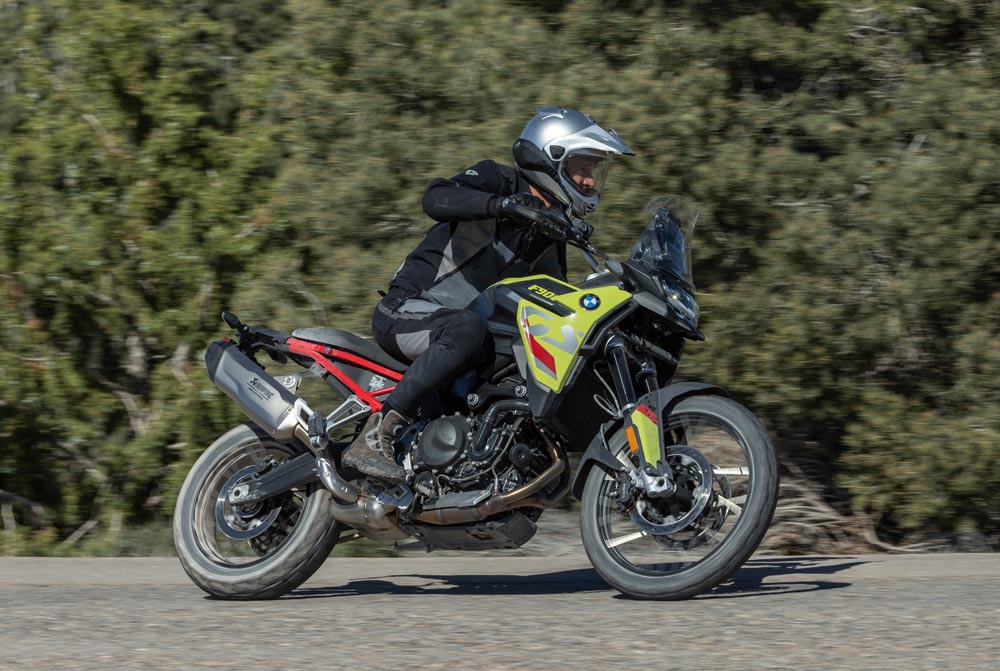
While I felt the BMW’s brakes could have used a bit more bite on the pavement, they worked perfectly fine and predictably on the dirt. It’s definitely a give-and-take thing with the 900’s brakes. Luckily, the F 900 GS makes it easy to disengage the rear ABS for the dirt.
The BMW’s smooth yet strong motor was a blast on the dirt with TC turned off. I never felt worried about the back end getting away from me if I got a little carried away with the throttle. The bike is very controllable. Plus, the 900’s Karoo 4 tires hooked up surprisingly well.
Dropping the F 900 GS is not an option. It comes from the factory without crash protection, so that can weigh heavily on your mind while you’re off-roading, especially on rocks, on the 900.
Final Thoughts | 2024 BMW F 900 GS
The F 900 GS has undergone significant enhancements in almost every aspect, making it a formidable contender in the middleweight ADV class. While there are minor drawbacks, such as a lack of range, the absence of compression damping on the standard shock, no way to adjust the windscreen and no crash protection, the overall improvements are substantial. With increased power, improved handling, significantly reduced weight, and enhanced on- and off-road handling capabilities, the F 900 GS is an impressive all-around motorcycle.CN
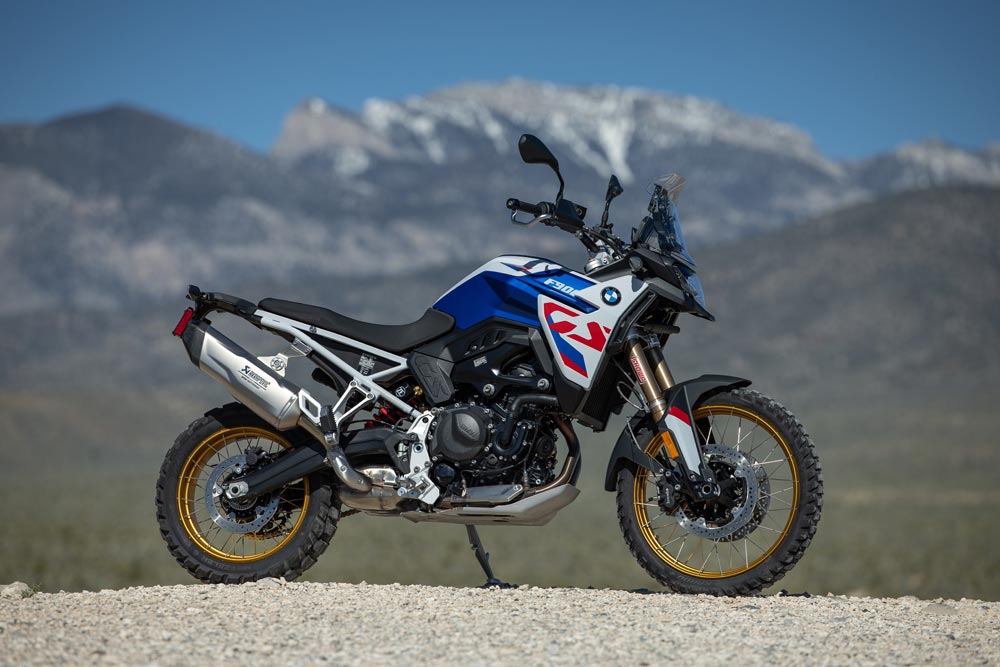
2024 BMW F 900 GS Specifications
| MSRP | $14,190 |
| Engine | Parallel-twin, 4-stroke |
| Valvetrain | DOHC, 4-valve per cylinder |
| Displacement | 895cc |
| Bore x Stroke | 86 x 77mm |
| Compression Ratio | 13.1:1 |
| Cooling System | Liquid |
| Transmission/Final Drive | 6-speed/chain |
| Claimed Horsepower | 105 hp at 8500 rpm |
| Claimed Torque | 68.6 lb-ft at 6750 rpm |
| Fuel System | Electronic fuel injection; ride-by-wire |
| Clutch | Wet, multiplate slipper; cable actuation |
| Engine Management/Ignition | BMS-X Digital engine-management system |
| Frame: | Bridge-type, steel shell construction |
| Front Suspension | Showa 43mm USD fork, fully adjustable |
| Rear Suspension | Showa shock, preload and rebound adjustable |
| Front-Wheel Travel | 9.1 in. |
| Rear-Wheel Travel | 8.5 in. |
| Front Brake | Brembo 2-piston floating caliper, dual 305mm discs w/ BMW ABS Pro |
| Rear Brake | 1-piston caliper, 265mm disc w/ BMW ABS Pro |
| Front Wheel | Aluminum spoked; 21 x 2.15 in. / 90/90R-21 |
| Rear Wheel | Aluminum spoked; 17 x 4.25 in. / 150/70R-17 |
| Rake/Trail | 28.0°/4.7 in. |
| Wheelbase | 62.6 in. |
| Seat Height | 34.2 in. |
| Fuel Capacity | 3.8 gal. |
| Weight (wet, claimed) | 482 lbs |
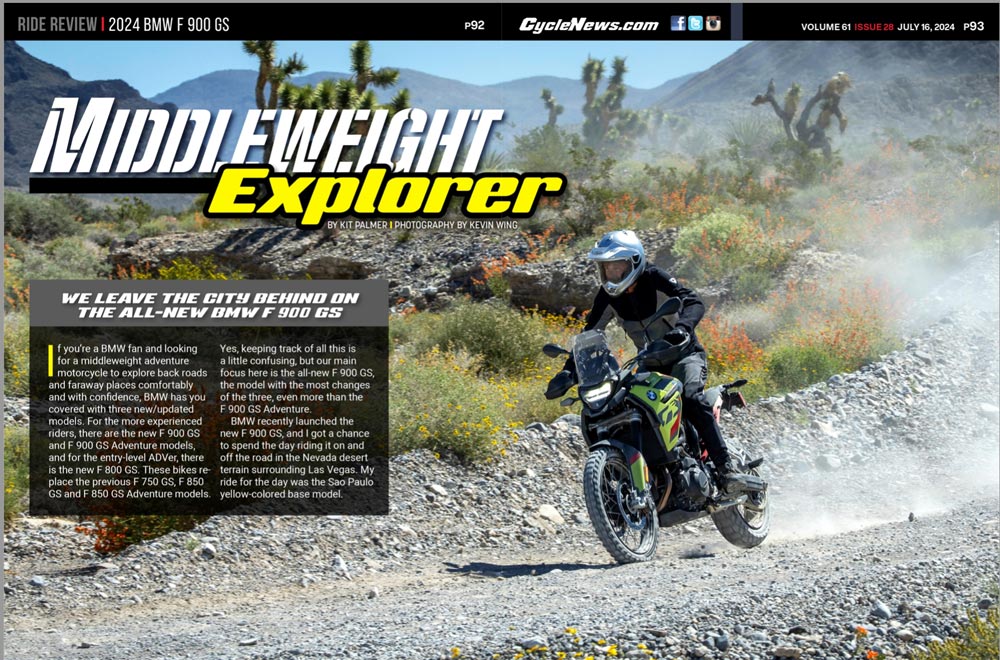
Click here to read the 2024 BMW F 900 GS review in the Cycle News Digital Edition Magazine.
Click here for the latest Cycle News Adventure motorcycle reviews and news.
Click here for more BMW motorcycle reviews and news.
